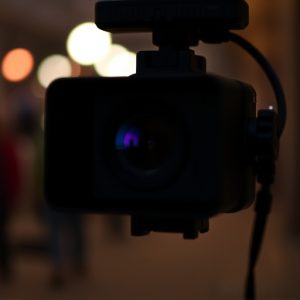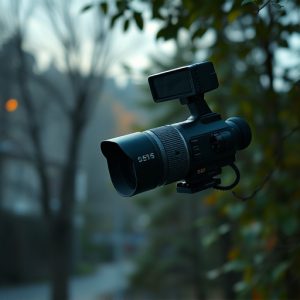Uncover & Hide: Advanced Nanny Cam Signal Detection & Placement Tips
Electromagnetic signals, particularly radio frequency (RF) and infrared (IR), are key to detecting h…….
Electromagnetic signals, particularly radio frequency (RF) and infrared (IR), are key to detecting hidden cameras or "nanny cams." Specialized equipment can uncover these devices, which are often strategically placed in inconspicuous locations like behind picture frames or electrical outlets. Understanding common hideouts such as near windows, fake smoke detectors, and ceiling ventilators is crucial for navigating privacy risks. Professionals use cutting-edge detection methods to identify signals from wireless cameras and audio recorders, making it vital to employ tactics like Faraday cages and regular encryption to prevent detection.
Uncover the secrets of stealthy surveillance with our comprehensive guide on detecting electromagnetic signals. In today’s digital age, understanding hidden cameras, or ‘nanny cams,’ is crucial for privacy protection. We’ll show you where these devices often hide—from power outlets to everyday objects—and equip you with advanced detection techniques and tools. Learn essential tips to secure your space and stay one step ahead of potential invaders, ensuring peace of mind in every corner of your home.
- Understanding Electromagnetic Signals: What to Detect
- Common Hideouts for Nanny Cams Revealed
- Advanced Detection Techniques and Tools
- Preventing Detection: Tips to Secure Your Devices
Understanding Electromagnetic Signals: What to Detect
Electromagnetic signals are an often-overlooked aspect of surveillance device detection. Understanding what to look for is key when trying to uncover hidden cameras, also known as nanny cams. These devices emit unique electromagnetic signatures that can be detected using specialized equipment. Common sources include wireless communication signals from cameras, audio transmitters, and even power lines.
When searching for where to hide nanny cams, be mindful of potential signal emissions. High-tech surveillance gear can transmit data over long distances, so checking for any unusual electromagnetic activity in a given area is essential. From radio frequency (RF) signals to infrared (IR) emissions, these subtle clues could indicate the presence of hidden cameras, helping you stay one step ahead in maintaining privacy and security.
Common Hideouts for Nanny Cams Revealed
Nanny cams, or hidden surveillance devices, are often placed in strategic locations to capture discreet footage without raising suspicion. While it’s essential to understand how to detect such devices, it’s equally crucial to know their common hideouts. Many homeowners choose locations that offer unobtrusive viewing angles and easy access for battery replacement or data transfer. Common spots include behind picture frames on walls, as they blend in with the décor; inside electrical outlets or switches, taking advantage of existing openings; under desks or tables, where they can monitor activities without being noticed; and within ceiling lights or fans, offering a bird’s-eye view.
In today’s digital era, folks are becoming increasingly adept at hiding these devices, making it essential to be vigilant. Outlets near windows or doors, for instance, might not be as innocuous as they seem, as they provide power and easy access for retrieval. Similarly, ceiling ventilators can hide miniature cameras, while fake smoke detectors may harbor real surveillance equipment. Navigating the maze of everyday objects could reveal these hidden cameras, especially in high-traffic areas or rooms with frequent visitors.
Advanced Detection Techniques and Tools
In the pursuit of advanced surveillance, those seeking to deploy hidden cameras, or “nanny cams,” often look to innovative detection techniques and tools. To counter these devices, professionals rely on cutting-edge electromagnetic signal detection methods. These include specialized equipment capable of identifying and pinpointing signals emitted by hidden cameras, such as wireless network cameras or audio recorders. By analyzing electromagnetic frequency bands, these tools can detect even the faintest signals, helping to uncover where these devices might be hidden—from cleverly concealed spots in walls or behind furniture to less obvious places like light switches or smoke detectors.
Understanding the technology used by surveillance devices is key to countering their presence. Advanced detection involves scanning for unusual electromagnetic emissions and analyzing signal patterns that could indicate the operation of a hidden camera. This requires expertise and specialized knowledge, making it crucial to engage professionals equipped with the latest tools and tactics in order to effectively protect privacy and uncover potential violations.
Preventing Detection: Tips to Secure Your Devices
To prevent detection, it’s crucial to understand that security cameras and other surveillance devices emit electromagnetic signals (EMF) that can be traced. One effective tip is to hide nanny cams in inconspicuous places, avoiding common locations like ceilings or walls where they might draw attention. Opt for creative hiding spots like behind picture frames, electrical outlets, or even fake smoke detectors—these less obvious positions can significantly reduce the risk of EMF detection.
Additionally, use protective shielding techniques such as Faraday cages or electromagnetic interference (EMI) shields to encase your devices. These tools disrupt the transmission and reception of electromagnetic signals, making it harder for potential intruders to trace your surveillance equipment. Regularly updating and encrypting your video feeds is also essential; modern encryption standards make intercepted data much harder to decipher, even if an EMF signal is detected.
In conclusion, understanding electromagnetic signals and their detection is key to securing your privacy. By knowing where to hide nanny cams and employing advanced detection techniques, you can significantly reduce the risk of surveillance. Remember, prevention is paramount, so stay informed about potential hideouts and use appropriate tools to keep your devices secure.


